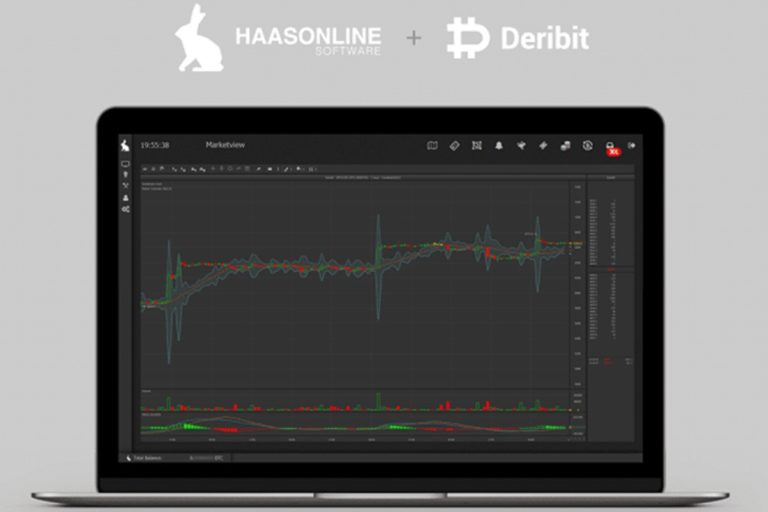pii_email_682a628b28d1256b8c7c
Communication and links with the world around us are the best for everyone. Nonentity can be a better partner than Microsoft Outlook when it comes to managing and balancing private and professional life. It assistances you manage and plan emails, keep track of pending meetings, private and business travels, and much more. With so many days of account entree, errors could occur at some point. Among the errors, the most mutual error is [pii_email_682a628b28d1256b8c7c]. You need to know all the material about it so that it is easy to use.
Table of Contents
What are the reasons for the [pii_email_682a628b28d1256b8c7c] error?
Here are some obvious reasons that may be causing the error:
- The error can occur when a manipulator is using multiple accounts without clearing the cache and cookies.
- It can also be caused by improper installation of Microsoft Outlook software on the device.
- The error is displayed in Outlook; When opening, it may be because the latest version has not been updated.
- Sometimes the user cannot identify the error. The support squad can help you better understand why in such cases.
Four ways to solve the error [pii_email_682a628b28d1256b8c7c]
It is important to find a workable and achievable solution to the problem a person faces. Here are the four easy ways to solve the error popup:
First method to solve [pii_email_682a628b28d1256b8c7c] error:
- update Microsoft Outlook
- Not updating to the latest version may be the first user error.
- Check that your PC or laptop is compatible with the newest version of Outlook. The supported, update Outlook and remove the earlier version.
- you upgrade from the preceding version, your files will revert to the new version.
- If a new Microsoft Office is left installed, you may need to back up important files.
- Opt for a simple file allocation. If Outlook continues to display an error, you should contact purchaser service.
Second method to solve the error [pii_email_682a628b28d1256b8c7c]:
- clear cookies and cache
- Not clearing cookies and cache is added common thing for users encountering the error.
- You must go to the File option and clear the cookies and Outlook cache.
- After that, you need to journal out of your Microsoft Outlook accounts. If you are using multiple accounts, sign out of all accounts.
- Restart or shut down and restart the laptop. Open a Microsoft account. The problem must be solved.
- If the error persists, go to the third option and solve the problem.
Third method to solve [pii_email_682a628b28d1256b8c7c] error:
- choose a car repair tool
- It is a tool that helps to correct and repair the problem that occurs in Microsoft Outlook automatically.
- Go and check the software details by going to the tool’s control panel and feature settings.
- Launch the Office 365 application and select the Microsoft application to repair.
- Change the button when the application starts and select the type of correction you want.
- Click on a solution and follow the commands on the window screen. Try searching for the Internet version of the repair tool.
- Try restarting Microsoft Outlook. If the application does not work, contact the technicians.
Fourth method to resolve [pii_email_682a628b28d1256b8c7c] error:
- remove third-party email application
- Sometimes using more than one email application can make Microsoft Outlook difficult to function.
- It is still caused by a conflict between two messaging apps and causes problems every time someone uses it.
- It is necessary to remove the untrusted source or third-party application from the computer for smoother operation.
- After deleting, open Microsoft Outlook again to see if the error has been resolved.
Different reasons can contribute to similar errors in the work equipment of other users. It is better to use small and convenient methods to solve the errors on the user side. Otherwise, customer support is always available!
Solve the Error [pii_email_682a628b28d1256b8c7c]
![Solve the Error [pii_email_682a628b28d1256b8c7c]](https://www.webtechgalaxy.com/wp-content/uploads/2021/10/what-way-to-solve-the-error-PII_EMAIL_841B43FADA260254C8D3-9.jpg)
Most of the Microsoft Outlook errors appear due to some glitches and errors in the installation process. Help investigate, identify and mitigate the problem and make the software run smoothly for
How to resolve the error [pii_email_682a628b28d1256b8c7c]
Communication and links with the world around us are the best for everyone. Nonentity can be a better partner than Microsoft Outlook when it comes to managing and balancing private and professional life. It assistances you manage and plan emails, keep track of pending meetings, private and business travels, and much more. With so many days of account entree, errors could occur at some point. Among the errors, the most mutual error is [pii_email_682a628b28d1256b8c7c]. You need to know all the material about it so that it is easy to use.
What are the reasons for the [pii_email_682a628b28d1256b8c7c] error?
Here are some obvious reasons that may be causing the error:
- The error can occur when a manipulator is using multiple accounts without clearing the cache and cookies.
- It can also be caused by improper installation of Microsoft Outlook software on the device.
- The error is displayed in Outlook; When opening, it may be because the latest version has not been updated.
- Sometimes the user cannot identify the error. The support squad can help you better understand why in such cases.
Four ways to solve the error [pii_email_682a628b28d1256b8c7c]
It is important to find a workable and achievable solution to the problem a person faces. Here are the four easy ways to solve the error popup:
First Method to Solve [pii_email_682a628b28d1256b8c7c] Error:
- update Microsoft Outlook
- Not updating to the latest version may be the first user error.
- Check that your PC or laptop is compatible with the newest version of Outlook. But, supported, update Outlook, and remove the earlier version.
- you upgrade from the preceding version, your files will revert to the new version.
- A new Microsoft Office is left installed, you may need to back up important files.
- Opt for a simple file allocation. The outlook continues to display an error, you should contact purchaser service.
Second Method to Solve the Error [pii_email_682a628b28d1256b8c7c]:
- clear cookies and cache
- Not clearing cookies and cache is added common thing for users encountering the error.
- You must go to the File option and clear the cookies and Outlook cache.
- After that, you need to journal out of your Microsoft Outlook accounts. If you are using multiple accounts, sign out of all accounts.
- Restart or shut down and restart the laptop. Open a Microsoft account. The problem must be solved.
- If the error persists, go to the third option and solve the problem.
Third method to solve [pii_email_682a628b28d1256b8c7c] error:
- choose a car repair tool
- It is a tool that helps to correct and repair the problem that occurs in Microsoft Outlook automatically.
- Go and check the software details by going to the tool’s control panel and feature settings.
- Launch the Office 365 application and select the Microsoft application to repair.
- Change the button when the application starts and select the type of correction you want.
- Click on a solution and follow the commands on the window screen. Try searching for the Internet version of the repair tool.
- Try restarting Microsoft Outlook. If the application does not work, contact the technicians.
Fourth method to resolve [pii_email_682a628b28d1256b8c7c] error:
- remove third-party email application
- Sometimes using more than one email application can make Microsoft Outlook difficult to function.
- It is still caused by a conflict between two messaging apps and causes problems every time someone uses it.
- It is necessary to remove the untrusted source or third-party application from the computer for smoother operation.
- After deleting, open Microsoft Outlook again to see if the error has been resolved.
Different reasons can contribute to similar errors in the work equipment of other users. It is better to use small and convenient methods to solve the errors on the user side. Otherwise, customer support is always available!
Solve the error [pii_email_682a628b28d1256b8c7c]
Most of the Microsoft Outlook errors appear due to some glitches and errors in the installation process. Help investigate, identify and mitigate the problem and make the software run smoothly for the user! First of all, you must look for simple and possible ways to solve a person’s problems. Simpler steps are required, and anyone can do them. Yes, the problem persists and has not been resolved. It is best to contact Microsoft’s main office or call a technician.
Also read: [pii_email_f4cea690933c501337c1] Error Code Fixed
Related Searches to
[pii_email_b4969755ef6881519767]
[pii_email_8079047078567379049d]
[pii_email_c5b4711fb519dab7145a]
[pii_email_e52fa7bb6627584ed378]
[pii_email_5439177ede8301c50c44]
[pii_email_89d6fa37d946a6dae75f]
[pii_email_37544bf4d350a0915f54]
[pii_email_71e6bcfa8a2bee2aa151]
[pii_email_3dd76af4bcadd8ded428]
[pii_email_acfbea1464775cbbb54e]
[pii_email_80fb90b73f6b386e57ff]
[pii_email_5df70dfa05d9b2c10f6d]
[pii_email_e188285bdb71eb7570eb]
[pii_email_35800da0131beebe44e2]
[pii_email_4963ef873adfeebdcd41]
[pii_email_9f2fe6037cc1578fa726]
[pii_email_ed091850a13867385bea]
[pii_email_123dd92c65546aac4234]
[pii_email_a861e05f6b3ccd51b36b]
[pii_email_a4afd22dca99c2593bff]
[pii_email_8e90db124b2282f8e586]
[pii_email_8dd6bcefcecdc6a73ef7]
[pii_email_28dc65b73e084c7fdeb3]
[pii_email_a09ae663ed64d4128110]
[pii_email_7d02305c6f5561c22040]
[pii_email_eba7eaeb6d025a2475b2]
[pii_email_95fb429ddab3b9357c9f]
[pii_email_f6731d8d043454b40280]
[pii_email_be2e2053115ed832a58c]
[pii_email_a427253221614b6547d5]
[pii_email_6fc72bf13a443be37ab3]
[pii_email_d4d3f5b9d7f3c8b22729]
[pii_email_864625849f4d9cdad180]
[pii_email_b02030edf01c934e4ab8]
[pii_email_acd77492efc0a21025eb]
[pii_email_a7b93224472ff079e7ed]
[pii_email_c31346fff2b6307b017b]
[pii_email_d6a09943977b247591d0]
[pii_email_3a19ac5cc937023e1594]
[pii_email_89fcbf1b8735e9871b3e]
[pii_email_037d07812f905a3927ae]
[pii_email_58fffc10f1403c2bb372]
[pii_email_338034f14d68ea443925]
[pii_email_dbd9dd084703ead3b9cf]
[pii_email_bdf13af903a8f5707fb2]
[pii_email_7f145965968cae8c3f8f]
[pii_email_8ca2fcc022248175005f]
[pii_email_76b1e82f53dea6fc1a63]
[pii_email_603d20f978fb1fc44cee]
[pii_email_4d754ba459eda4988469]
[pii_email_2031b8aa05a3e0b21ffd]
[pii_email_e9d48ac2533bded18981]
[pii_email_d1fab81e01ca905c5a9d]
[pii_email_d6a2f430ccd80d85a9ec]
[pii_email_84eb7572bd91baae7e9f]
[pii_email_db2c9952c836324d9f95]
[pii_email_ba6dffecaf439976a7a6]
[pii_email_33bcc5fa9284de56eb3d]
[pii_email_760b357a550d10b71362]
[pii_email_f6815c801e7d702fe915]
[pii_email_f25b7c2ce219e167e8f5]
[pii_email_f744b3ae828b2f819cbd]
[pii_email_a080349f0bcab19e039e]
[pii_email_081a2214d44147a79040]
juryweb [pii_email_455c84e3d0d28c86418d]
[pii_email_28ce56625b3f3d90ff32]
[pii_email_304b9b27d538415a4ade]
[pii_email_c0cba36634674c2efac7]
[pii_email_61ec7773a7b0fcaa2c30]
[pii_email_2380b9d6520a43ec25f6]
[pii_email_0fb3fac562b06ea1d115]
[pii_email_d9f3c17c013beb6092a3]
[pii_email_90b4547442f1f1e001d2]
[pii_email_ab630e96d1a514101657]
[pii_email_39b488ed3a6ea57f1f5b]
[pii_email_823f43c735bb5e7c851b]
[pii_email_148502ad759f50f39787]
[pii_email_ffb0a543bed4a4482974]
[pii_email_a4117bc87cb352b15b68]
[pii_email_88b3fd645ef26dd9649f]
[pii_email_a37aeab4f52a36cfec65]
[pii_email_07a63723810b70686330]
[pii_email_09561ce25d5bd38c7da2]
[pii_email_1d792d7a4e3281d25278]
[pii_email_ed0a25716803e5b42cc2]
[pii_email_bd3a8df463d4a6ebf4ef]
[pii_email_2776f13cb4eb31324aa1]
[pii_email_519b1bf588cf9a3db179]
[pii_email_ddb7b0ca0f8cb4d23f14]
[pii_email_57a4a2f20ec6813a8481]
[pii_email_5f989e2fb5d007bf52e0]
[pii_email_b79c1d8e3bccecb9ddb7]
[pii_email_947a8a5da595cf38a0e1]
[pii_email_f4cea690933c501337c1]
[pii_email_89b56b2b01b2f18f9d6e]
[pii_email_3c4e64746b7dbdf0f125]
[pii_email_0763df7609c640dae09d]
[pii_email_3af808b2d3c4cdf999da]
[pii_email_f14e615268c14fcef7f4]
[pii_email_8c96c1c23f5914dd67d1]
[pii_email_5a3f70ed21f415521fa3]
[pii_email_f60e9c57c48c91b3fdf8]
[pii_email_3a055da5e78763bfb9d1]
[pii_email_f886ca817c3ecfa6ece0]
[pii_email_dd94fb8179ba2537ba4c]
[pii_email_35ecc45cdf0e64449ffb]
[pii_email_283a3b234a30c4726510]

![How to Resolve the Error [pii_email_682a628b28d1256b8c7c] How to Resolve the Error [pii_email_682a628b28d1256b8c7c]](https://www.webtechgalaxy.com/wp-content/uploads/2021/10/what-way-to-solve-the-error-PII_EMAIL_841B43FADA260254C8D3-8-768x512.jpg)

![How To Solve [Pii_email_af9655d452e4f8805ebf] Error? How To Solve [Pii_email_af9655d452e4f8805ebf] Error?](https://www.webtechgalaxy.com/wp-content/uploads/2021/10/ERROR-48-768x512.jpg)
![[pii_email_af9655d452e4f8805ebf] Error](https://www.webtechgalaxy.com/wp-content/uploads/2021/10/ERROR-47.jpg)


![Top 4 Outlook [pii_email_873b4a4390cfb94bc11d] Errors Top 4 Outlook [pii_email_873b4a4390cfb94bc11d] Errors](https://www.webtechgalaxy.com/wp-content/uploads/2023/03/pii_email_873b4a4390cfb94bc11d-1-768x512.jpg)


